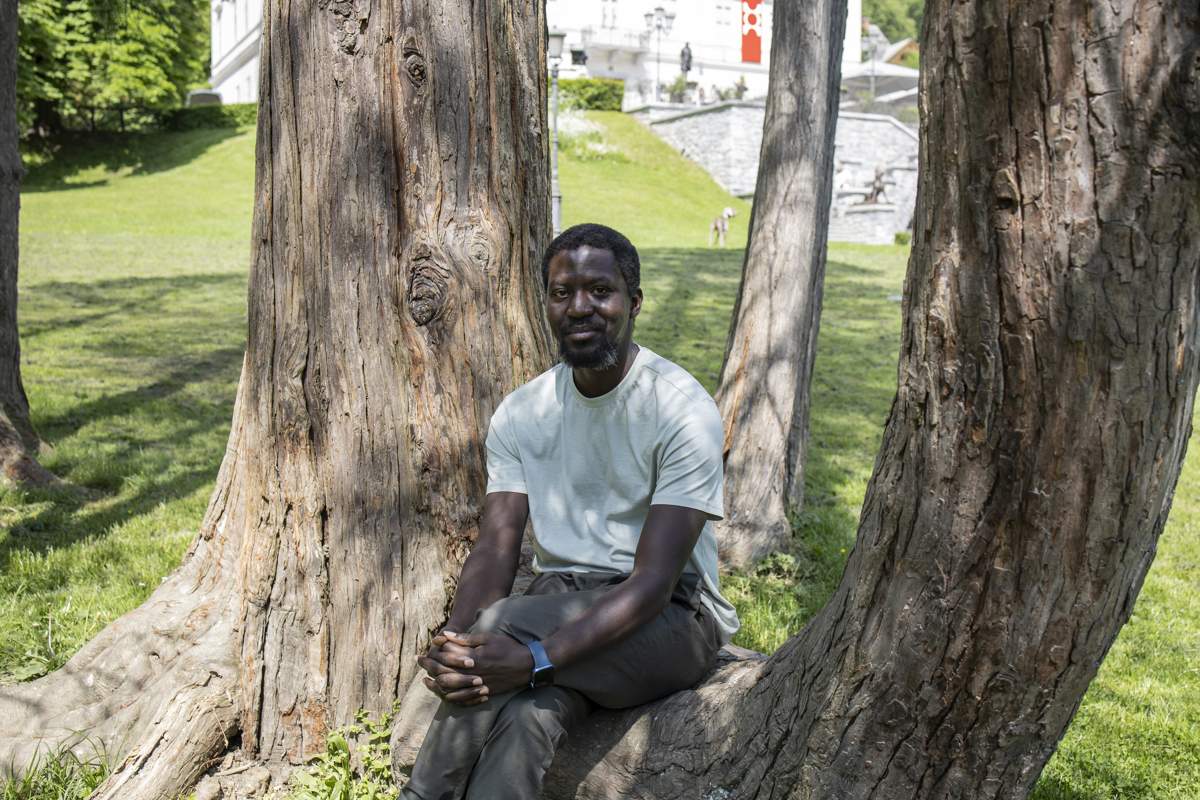Young Ghanaian artist Ibrahim Mahama (Tamale, 1987) is the director of the 35th Ljubljana Biennale of Graphic Arts, which will be held from September 15, 2023 to January 14, 2024. The name of Mahama, an artist whom the Italian public knows well as he depopulated at the last Venice Biennale, won the Pino Pascali Prize 2021 and packed the toll booths of Milan’s Porta Venezia in 2019, was made official today by the Ljubljana International Graphic Arts Center (MGLC), which organizes the exhibition, one of the longest-running in the world, established in 1955.
Mahama hails from Ghana, a country that had solid ties with Yugoslavia between the late 1950s and 1966, when Ghana’s first president, Kwame Nkrumah, was overthrown in a military coup. Mahama has long been interested in post-independence infrastructure in Ghana, particularly the buildings that were part of a socialist program by Nkrumah to make Ghana self-sufficient. Subsequently, these structures were abandoned altogether. The impact of former Yugoslav architects on institutional buildings such as the University of Kumasi was particularly significant during this period. Ibrahim Mahama sees the invitation to become the artistic director of the Ljubljana Biennale as an inspiring opportunity to explore this part of history and reconnect some of the lost moments or gaps in the shared bond of that time between Ghana and the former Yugoslavia.
The artist has already let it be known that the upcoming Ljubljana Biennial will be very simple and at the same time stitch together connections that were lost or probably never established in its context. Mahama is very interested in (re)establishing such connections and especially in connecting the local Slovenian art community with artists abroad, thus creating intercontinental relationships within the 35th Ljubljana Biennial of Graphic Arts.
Born in 1987 in Tamale, Ghana, Mahama lives and works between Accra, Kumasi, and Tamale. His work has appeared in numerous international exhibitions, including the Venice Biennale, the Sydney Biennale, the Saatchi Gallery in London, K21 in Dusseldorf, the Eli and Edythe Broad Art Museum in Michigan, the Tel Aviv Museum of Art in Israel, and many others. Mahama’s most famous works are those made from the draperies of burlap sacks used to pack entire buildings: in fact, the artist reuses cocoa sacks he finds in local markets in Ghana and exhibits his works in Ghanaian markets and galleries. Through his choice of exhibition spaces, his works critically reflect on the value system inherent in these materials.
Represented by London-based gallery White Cube, Mahama uses proceeds from his art practice to initiate and support cultural and educational institutions in Ghana-he is in fact creating ways to keep contemporary African art on the continent. In 2019, he opened the Savannah Center for Contemporary Art (SCCA) space in Tamale, run directly by the artist. Then, in 2020, he opened a vast studio complex, Red Clay, in nearby Janna Kpenn. Both sites represent Mahama’s contribution to the development and expansion of the contemporary art scene in his home country, and include exhibition spaces, research facilities, and an artist residency center. In 2021 Mahama also transformed a renovated silo in Tamale into the Nkrumah Volini Art Center.
The 35th edition of the Ljubljana Biennale, under artistic director Ibrahim Mahama, will be realized in collaboration with a number of international partners (to be announced) and national partners including the Cukrarna Gallery, a recently renovated 1828 sugar refinery that has been used as a venue for both exhibition and contemporary art performance since September 2021.
 |
| Young Ghanaian artist Ibrahim Mahama is the director of the 35th Ljubljana Biennale |
Warning: the translation into English of the original Italian article was created using automatic tools. We undertake to review all articles, but we do not guarantee the total absence of inaccuracies in the translation due to the program. You can find the original by clicking on the ITA button. If you find any mistake,please contact us.